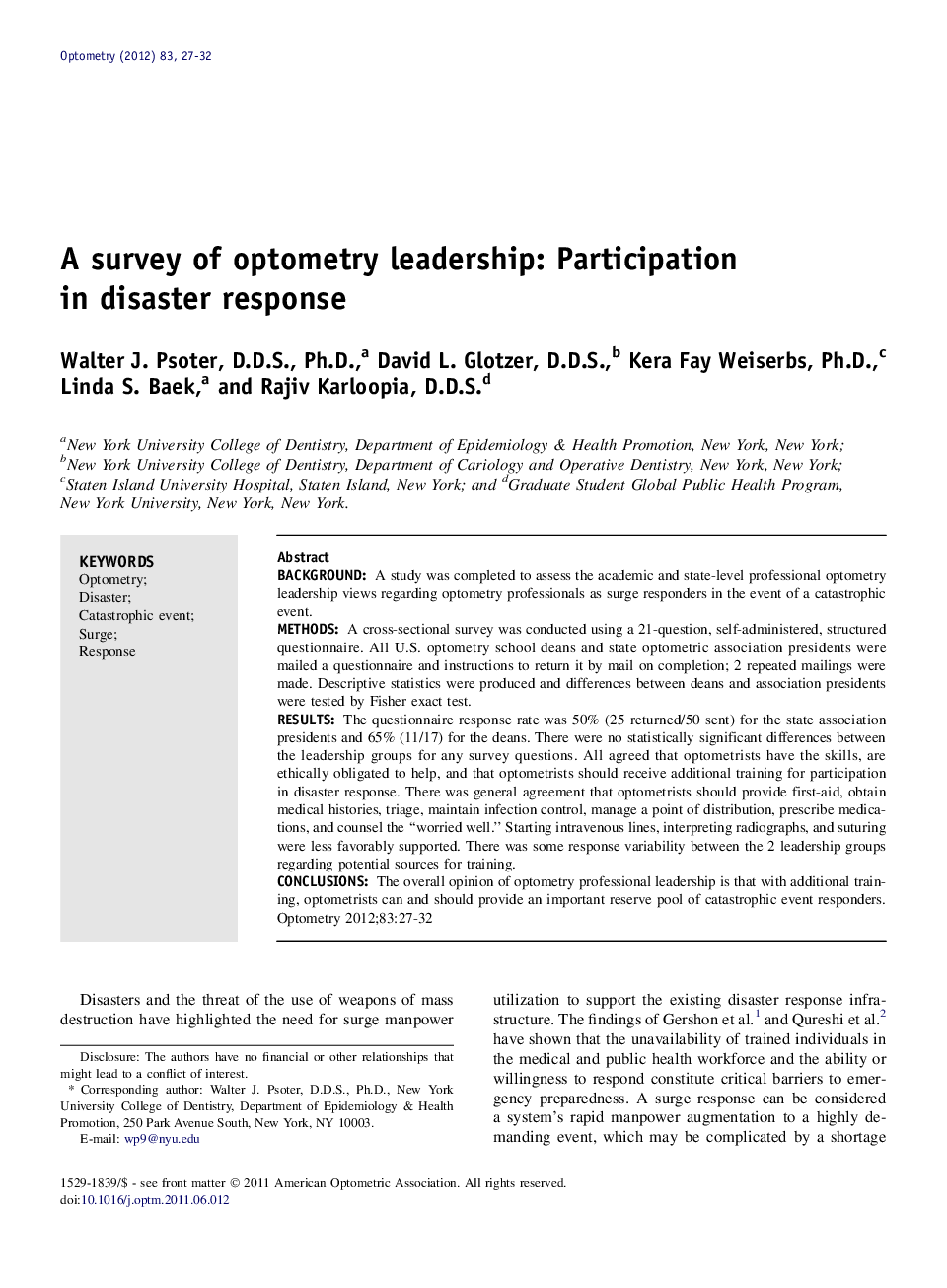| Article ID | Journal | Published Year | Pages | File Type |
|---|---|---|---|---|
| 2702068 | Optometry - Journal of the American Optometric Association | 2012 | 6 Pages |
BackgroundA study was completed to assess the academic and state-level professional optometry leadership views regarding optometry professionals as surge responders in the event of a catastrophic event.MethodsA cross-sectional survey was conducted using a 21-question, self-administered, structured questionnaire. All U.S. optometry school deans and state optometric association presidents were mailed a questionnaire and instructions to return it by mail on completion; 2 repeated mailings were made. Descriptive statistics were produced and differences between deans and association presidents were tested by Fisher exact test.ResultsThe questionnaire response rate was 50% (25 returned/50 sent) for the state association presidents and 65% (11/17) for the deans. There were no statistically significant differences between the leadership groups for any survey questions. All agreed that optometrists have the skills, are ethically obligated to help, and that optometrists should receive additional training for participation in disaster response. There was general agreement that optometrists should provide first-aid, obtain medical histories, triage, maintain infection control, manage a point of distribution, prescribe medications, and counsel the “worried well.” Starting intravenous lines, interpreting radiographs, and suturing were less favorably supported. There was some response variability between the 2 leadership groups regarding potential sources for training.ConclusionsThe overall opinion of optometry professional leadership is that with additional training, optometrists can and should provide an important reserve pool of catastrophic event responders.
